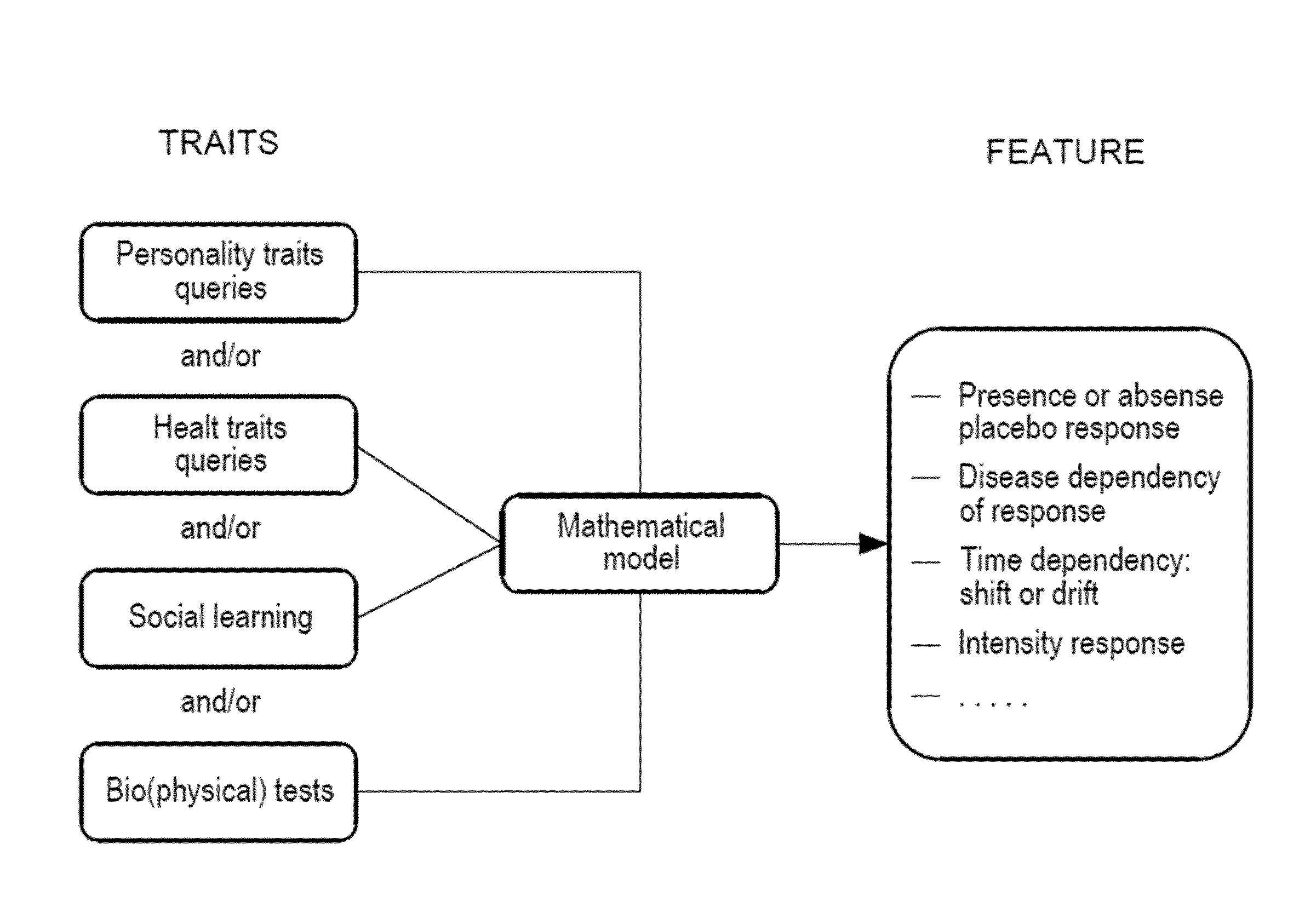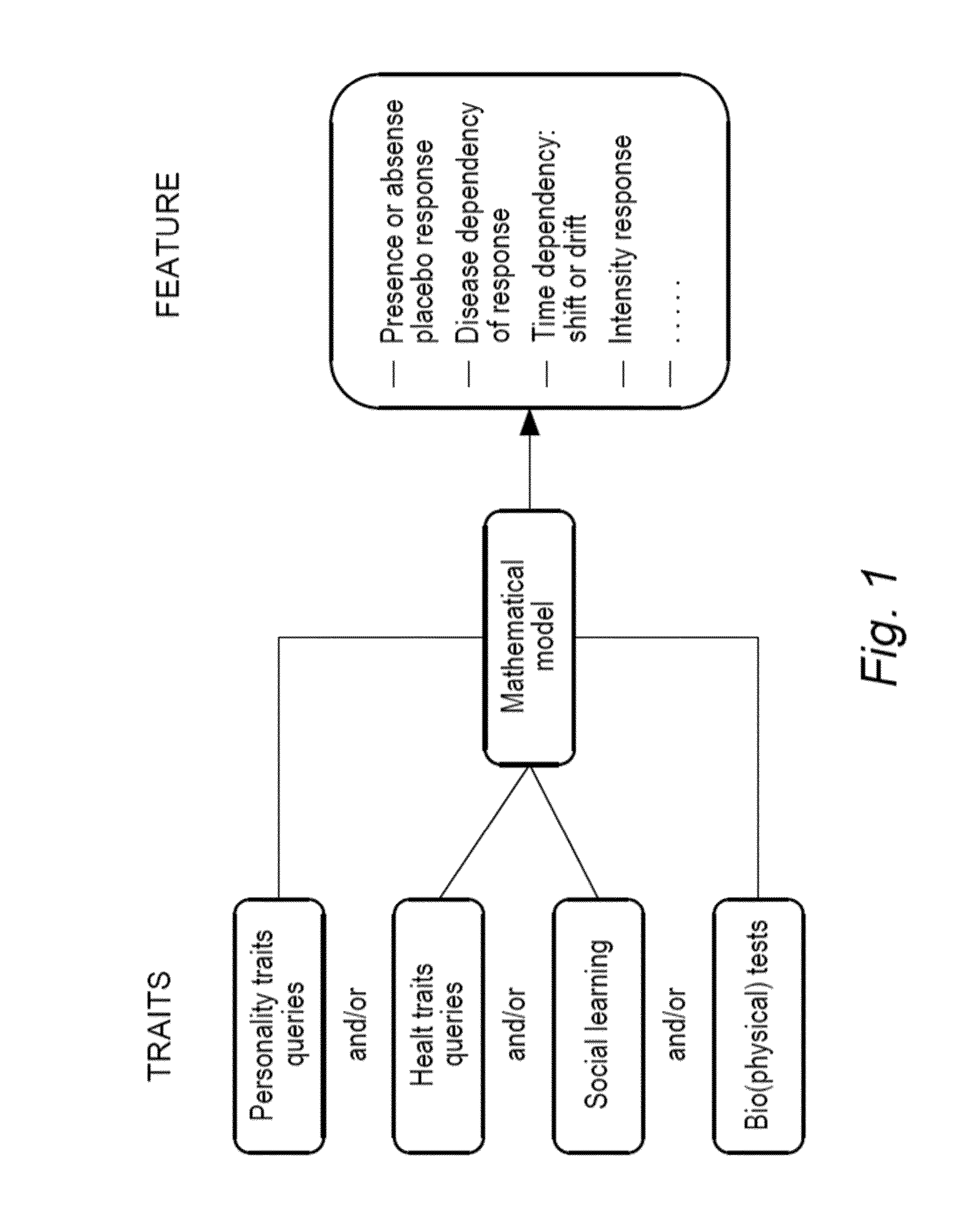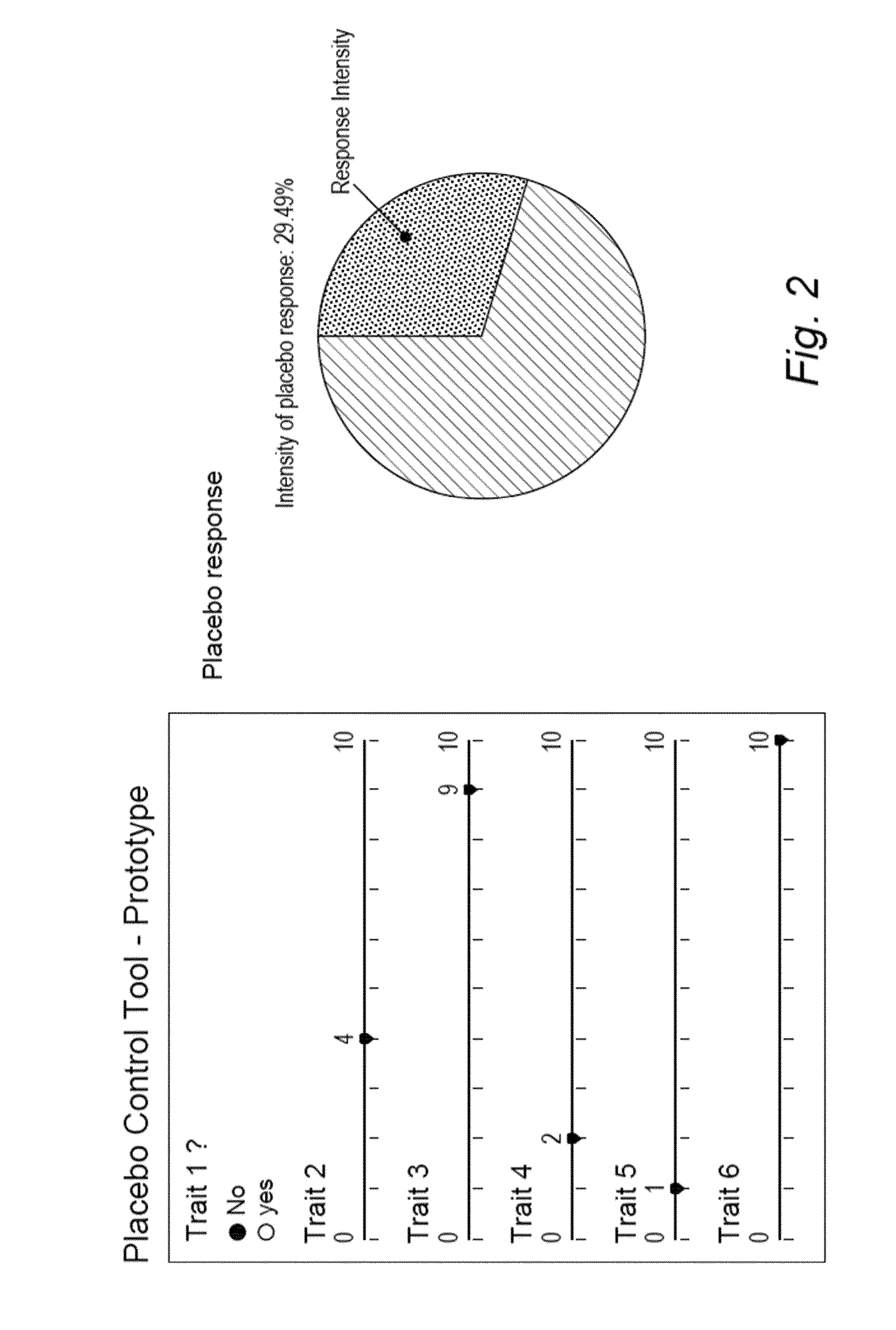Method for prediction of a placebo response in an individual
a placebo response and individual technology, applied in the field of methods for predicting the response or effect of a placebo, can solve the problems of difficult to demonstrate the superiority of the placebo, many phase 2 and 3 clinical trials are abandoned or failed, complex asthma, etc., and achieve the effect of accurate placebo scores
- Summary
- Abstract
- Description
- Claims
- Application Information
AI Technical Summary
Benefits of technology
Problems solved by technology
Method used
Image
Examples
example 1
[0168]Description of a clinical study aimed to collect the “input variables / data” and to estimate real values of a placebo response in an experimental situation where the level of placebo response can be evaluated a posteriori
[0169]The first example was aimed to collect among a sample of patients with neuropathic pain i.e.,[0170]the input variables deemed a priori to be essential for predicting a placebo response and[0171]a real estimation of a placebo response measured in specific situations where the level of placebo response can be evaluated.
[0172]This Example 1 was aimed to show that the input variables / data, in the absence of the method and tool of the invention, are not able to predict the placebo response of such patients.
[0173]Thus a clinical study has been conducted [hereafter Clinical study A]. Clinical study A had as objective to predict an individual placebo response (the Scoring Factor) after investigating the relationship between the patient's profile (as defined by hi...
example 2
Comparison Between the Prediction of the Placebo Response of the Patients in Example 1 (the Scoring Factor) and Their Real Placebo Response Measured a Posteriori
example 2.1
Use of a Linear Regression Algorithm (LRA) for Generating a Scoring Factor by Using the Input Variables Collected in Example 1
[0209]Example 2.1 shows the ability of a linear regression algorithm such as LRA-1 (see below) to use the data [demographic data, answers to the 212 queries at baseline and the data from the biophysical test of Example 1] collected among 30 patients (out of the 41 patients included in the Clinical Study A of Example 1) in order to predict a placebo response [the Scoring Factor] for each of the 30 patients.
[0210]LRA-1 Used:
f(x)=−(−6.309+0.030*x1+0.268*x2+1.308*x3−0.058*x4+0.031*x5−0.220*x6+0.297*x7)→ŷ
where:[0211]f(x)→ŷ,[0212]ŷ being the Scoring Factor[0213]y is the “real” placebo response based on the variation of the WAPS score [AWAPS][0214]f(x) is the model, a function of x, and
[0215]x are the input variables, x={x1=[Age], x2=[Expectation], x3=[Agreeableness], x4=[Extraversion], x5=[Internal factor of perception of health-related issues], x6=[Beliefs in a Ju...
PUM
 Login to View More
Login to View More Abstract
Description
Claims
Application Information
 Login to View More
Login to View More - R&D
- Intellectual Property
- Life Sciences
- Materials
- Tech Scout
- Unparalleled Data Quality
- Higher Quality Content
- 60% Fewer Hallucinations
Browse by: Latest US Patents, China's latest patents, Technical Efficacy Thesaurus, Application Domain, Technology Topic, Popular Technical Reports.
© 2025 PatSnap. All rights reserved.Legal|Privacy policy|Modern Slavery Act Transparency Statement|Sitemap|About US| Contact US: help@patsnap.com



